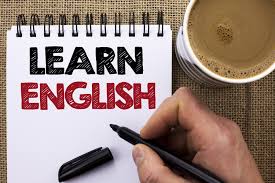DỊCH HOÀN THIỆN ĐỀ THI IELTS READING VÀ GIẢI THÍCH ĐÁP ÁN:
The Birth of Scientific English
World science is dominated today by a small number of languages, including Japanese, German and French, but it is English which is probably the most popular global language of science. This is not just because of the importance of English-speaking countries such as the USA in scientific research; the scientists of many non-English-speaking countries find that they need to write their research papers in English to reach a wide international audience. Given the prominence of scientific English today, it may seem surprising that no one really knew how to write science in English before the 17th century. Before that, Latin was regarded as the lingua franca for European intellectuals. ĐOẠN 1
Khoa học thế giới ngày nay bị thống trị bởi một số ít ngôn ngữ, bao gồm tiếng Nhật, tiếng Đức và tiếng Pháp, nhưng chính tiếng Anh có lẽ là ngôn ngữ khoa học toàn cầu phổ biến nhất. Điều này không chỉ vì tầm quan trọng của các quốc gia nói tiếng Anh như Hoa Kỳ trong nghiên cứu khoa học; các nhà khoa học của nhiều quốc gia không nói tiếng Anh nhận thấy rằng họ cần phải viết các bài nghiên cứu của mình bằng tiếng Anh để tiếp cận được nhiều đối tượng quốc tế. Với sự nổi trội của tiếng Anh khoa học ngày nay, có vẻ như đáng ngạc nhiên là không ai thực sự biết cách viết khoa học bằng tiếng Anh trước thế kỷ 17. Trước đó, tiếng Latinh được coi là ngôn ngữ chung của giới trí thức châu Âu.
The European Renaissance (c. 14th-16th century) is sometimes called the 'revival of learning', a time of renewed interest in the 'lost knowledge' of classical times. At the same time, however, scholars also began to test and extend this knowledge. The emergent nation-states of Europe developed competitive interests in world exploration and the development of trade. Such expansion, which was to take the English language west to America and east to India, was supported by scientific developments such as the discovery of magnetism (and hence the invention of the compass), improvements in cartography and - perhaps the most important scientific revolution of them all - the new theories of astronomy and the movement of the Earth in relation to the planets and stars, developed by Copernicus (1473-1543). ĐOẠN 2
Thời kỳ Phục hưng ở châu Âu (khoảng thế kỷ 14-16) đôi khi được gọi là 'thời kỳ phục hưng của kiến thức', thời điểm khơi dậy mối quan tâm đến 'kiến thức đã mất' của thời cổ điển. Tuy nhiên, đồng thời, các học giả cũng bắt đầu thử nghiệm và mở rộng kiến thức này. Các chính quyền quốc gia mới nổi của châu Âu đã bộc lộ sự quan tâm dữ dội trong việc khám phá thế giới và phát triển thương mại. Sự mở rộng như vậy, nhằm đưa tiếng Anh về phía tây sang Mỹ và phía đông sang Ấn Độ, được hỗ trợ bởi những phát triển khoa học như khám phá ra từ tính (và do đó là phát minh ra la bàn), những cải tiến về bản đồ học và - có lẽ là cuộc cách mạng khoa học quan trọng nhất trong số đó - những lý thuyết mới về thiên văn học và sự chuyển động của Trái đất liên quan đến các hành tinh và các ngôi sao, được phát triển bởi Copernicus (1473-1543).
England was one of the first countries where scientists adopted and publicised Copernican ideas with enthusiasm. Some of these scholars, including two with interests in language -John Wall's and John Wilkins - helped found the Royal Society in 1660 in order to promote empirical scientific research. ĐOẠN 3
Anh là một trong những quốc gia đầu tiên nơi các nhà khoa học nhiệt tình áp dụng và phổ biến các ý tưởng của Copernicus. Một số học giả này, trong đó có hai người quan tâm đến ngôn ngữ - John Wall's và John Wilkins - đã giúp thành lập Hiệp hội Hoàng gia vào năm 1660 nhằm thúc đẩy nghiên cứu khoa học thực nghiệm.
Across Europe similar academies and societies arose, creating new national traditions of science. In the initial stages of the scientific revolution, most publications in the national languages were popular works, encyclopaedias, educational textbooks and translations. ĐOẠN 4
Trên khắp châu Âu, các học viện và hiệp hội tương tự đã mọc lên tạo ra những truyền thống khoa học quốc gia mới. Trong giai đoạn đầu của cuộc cách mạng khoa học, hầu hết các ấn phẩm bằng quốc ngữ là các công trình phổ biến, bách khoa toàn thư, sách giáo khoa và các bản dịch.
Original science was not done in English until the second half of the 17th century. For example, Newton published his mathematical treatise, known as the Principia, in Latin, but published his later work on the properties of light - Opticks - in English. ĐOẠN 5

1. Mua bộ đề gần 400 bài ielts reading - Dịch và giải chi tiết Chỉ 199k bao gồm toàn bộ đề trong bộ Cambridge ( từ bộ 1 -19) và nhiều đề thi thực tế ( xem danh sách 400 đề ielts reading tại đây). Xem bài mẫu tại đây, Bài mẫu 1, bài mẫu 2, bài mẫu 3. Giải đề bao gồm phần dịch bài đọc, dịch phần câu hỏi, giải thích chi tiết, ( chỉ có thể tải, in phần đề để luyện tập, phần giải chi tiết và dịch chỉ xem online).
>>>>> Đặc biệt tặng kèm Dịch và giải chi tiết bộ đề Ielts listening từ Cam 10-18 và tặng kèm hơn 300 đề Ielts thực tế ( không có lời giải chi tiết chỉ có đề và đáp án) ( khác với bộ 400 đề ở trên). Vui lòng điền thông tin theo form tại đây và thanh toán theo thông tin CK trong form.
2. Đặc biệt dành tặng 100 bạn hoàn thành buổi học thử miễn phí khóa học Ielts Speaking online 1 kèm 1, các bạn sẽ được tặng bộ đề 400k bài Ielts reading và bộ đề Ielts Listening bộ Cam từ 10-18 gồm bài dịch và giải chi tiết, giải thích từ vựng khó ( thời hạn sử dụng trong vòng 2 tháng). Xem thông tin khóa học Ielts Speaking online 1 kèm 1 và đăng ký học thử tại đây.
There were several reasons why original science continued to be written in Latin. The first was simply a matter of audience. Latin was suitable for an international audience of scholars, whereas English reached a socially wider, but more local, audience. Hence, popular science was written in English. ĐOẠN 6
A second reason for writing in Latin may, perversely, have been a concern for secrecy. Open publication had dangers in putting into the public domain preliminary ideas which had not yet been fully exploited by their 'author'. This growing concern about intellectual property rights was a feature of the period - it reflected both the humanist notion of the individual, rational scientist who invents and discovers through private intellectual labour, and the growing connection between original science and commercial exploitation. There was something of a social distinction between 'scholars and gentlemen' who understood Latin, and men of trade who lacked a classical education. And in the mid-17th century it was common practice for mathematicians to keep their discoveries and proofs secret, by writing them in cipher, in obscure languages, or in private messages deposited in a sealed box with the Royal Society. Some scientists might have felt more comfortable with Latin precisely because its audience, though in national, was socially restricted. Doctors clung the most keenly to Latin as an 'insider language'. ĐOẠN 7
A third reason why the writing of original science in English was delayed may have been to do with the linguistic inadequacy of English in the early modern period. English was not well equipped to deal with the scientific argument. First, it lacked the necessary technical vocabulary. Second, it lacked the grammatical resources required to represent the world in an objective and impersonal way, and to discuss the relations, such as cause and effect, that might hold between complex and hypothetical entities. ĐOẠN 8
Fortunately, several members of the Royal Society possessed an interest in language and became engaged in various linguistic projects. Although a proposal in 1664 to establish a committee for improving the English language came to little, the society's members did a great deal to foster the publication of science in English and to encourage the development of a suitable writing style. Many members of the Royal Society also published monographs in English. One of the first was by Robert Hooke, the society's first curator of experiments, who described his experiments with microscopes in Micrographia (1665). This work is largely narrative in style, based on a transcript of oral demonstrations and lectures. ĐOẠN 9
In 1665 a new scientific journal, Philosophical Transactions, was inaugurated. Perhaps the first international English-language scientific journal, it encouraged a new genre of scientific writing, that of short, focused accounts of particular experiments. ĐOẠN 10
The 17th century was thus a formative period in the establishment of scientific English. In the following century, much of this momentum was lost as German established itself as the leading European language of science. It is estimated that by the end of the 18th century 401 German scientific journals had been established as opposed to 96 in France and 50 in England. However, in the 19th century, scientific English again enjoyed substantial lexical growth as the industrial revolution created the need for new technical vocabulary, and new, specialised, professional societies were instituted to promote and publish in the new disciplines. ĐOẠN 11
*** lingua franca: a language which is used for communication between groups of people who speak different languages
>>>>> Xem thêm:
♦ Tổng hợp câu trả lời, câu hỏi, từ vựng của hơn 70 chủ đề Ielts Speaking part 1
♦ Tổng hợp gần 400 đề thi Ielts reading ( bao gồm dịch, giải chi tiết, từ vựng)
Questions 28-34
Complete the summary.
Choose NO MORE THAN TWO WORDS from the passage for each answer.
Write your answers in boxes 28-34 on your answer sheet.
In Europe, modern science emerged at the same time as the nation state. At first, the scientific language of choice remained 28 ......................... It allowed scientists to communicate with other socially privileged thinkers while protecting their work from unwanted exploitation. Sometimes the desire to protect ideas seems to have been stronger than the desire to communicate them, particularly in the case of mathematicians and 29 ......................... In Britain, moreover, scientists worried that English had neither the 30 ......................... nor the 31 ......................... to express their ideas. This situation only changed after 1660 when scientists associated with the 32 ......................... set about developing English. An early scientific journal fostered a new kind of writing based on short descriptions of specific experiments. Although English was then overtaken by 33 ......................... it developed again in the 19th century as a direct result of the 34 ..........................
Questions 35-37
Do the following statements agree with the information given in Reading Passage 73?
In boxes 35-37 on your answer sheet, write:
YES if the statement agrees with the writer's claims
NO if the statement contradicts the writer's claims
NOT GIVEN if it is impossible to say what the writer thinks about this
35. There was strong competition between scientists in Renaissance Europe.
36. The most important scientific development of the Renaissance period was the discovery of magnetism.
37. In 17th-century Britain, leading thinkers combined their interest in science with an interest in how to express ideas.
Questions 38-40
Complete the table.
Choose NO MORE THAN TWO WORDS from the passage for each answer.
Write your answers in boxes 38-40 on your answer sheet.
|
Science written in the first half of the 17th century |
||
|
Language used |
Latin |
English |
|
Type of science |
Original |
38 ...................... |
|
Examples |
39 ...................... |
Encyclopaedias |
|
Target audience |
International scholars |
40 ......................, but socially wider |
ĐÁP ÁN, GIẢI CHI TIẾT và DỊCH HOÀN THIỆN ĐỀ THI IELTS READING:
The Birth of Scientific English
Questions 28-34
Complete the summary.
Choose NO MORE THAN TWO WORDS from the passage for each answer.
Write your answers in boxes 28-34 on your answer sheet.
In Europe, modern science emerged at the same time as the nation state. At first, the scientific language of choice remained 28 ..... Latin.................... It allowed scientists to communicate with other socially privileged thinkers while protecting their work from unwanted exploitation. Sometimes the desire to protect ideas seems to have been stronger than the desire to communicate them, particularly in the case of mathematicians and 29 ......doctors..................
Ở châu Âu, khoa học hiện đại xuất hiện cùng lúc với chính quyền nhà nước. Lúc đầu, ngôn ngữ khoa học được lựa chọn vẫn là tiếng Latinh. Nó cho phép các nhà khoa học giao tiếp với các nhà tư tưởng có đặc quyền xã hội khác trong khi bảo vệ công trình của họ khỏi bị khai thác không mong muốn. Đôi khi mong muốn bảo vệ các ý tưởng dường như mạnh hơn mong muốn truyền đạt chúng, đặc biệt là trong trường hợp của các nhà toán học và bác sĩ.
Giải thích: đoạn 7
A second reason for writing in Latin may, perversely, have been a concern for secrecy. Open publication had dangers in putting into the public domain preliminary ideas which had not yet been fully exploited by their 'author'
And in the mid-17th century it was common practice for mathematicians to keep their discoveries and proofs secret, by writing them in cipher, in obscure languages, or in private messages deposited in a sealed box with the Royal Society. Some scientists might have felt more comfortable with Latin precisely because its audience, though in national, was socially restricted. Doctors clung the most keenly to Latin as an 'insider language'.
Questions 35-37
Do the following statements agree with the information given in Reading Passage 73?
In boxes 35-37 on your answer sheet, write:
YES if the statement agrees with the writer's claims
NO if the statement contradicts the writer's claims
NOT GIVEN if it is impossible to say what the writer thinks about this
35.NG There was strong competition between scientists in Renaissance Europe.
Có sự cạnh tranh gay gắt giữa các nhà khoa học ở Châu Âu thời Phục hưng.
36.F The most important scientific development of the Renaissance period was the discovery of magnetism.
Sự phát triển khoa học quan trọng nhất của thời kỳ Phục hưng là khám phá ra từ tính.
Giải thích: đoạn 2
perhaps the most important scientific revolution of them all - the new theories of astronomy and the movement of the Earth in relation to the planets and stars, developed by Copernicus (1473-1543).
Complete the table.
Choose NO MORE THAN TWO WORDS from the passage for each answer.
Write your answers in boxes 38-40 on your answer sheet.
|
Science written in the first half of the 17th century |
||
|
Language used |
Latin |
English |
|
Type of science |
Original |
38 ........popular.............. |
|
Examples |
39 ......Newton's Principia. ............... |
Encyclopaedias |
|
Target audience |
International scholars |
40 .....more local................., but socially wider |
38. popular
Giải thích: đoạn 4
Across Europe similar academies and societies arose, creating new national traditions of science. In the initial stages of the scientific revolution, most publications in the national languages were popular works, encyclopaedias, educational textbooks and translations.
đoạn 6
There were several reasons why original science continued to be written in Latin. The first was simply a matter of audience. Latin was suitable for an international audience of scholars, whereas English reached a socially wider, but more local, audience. Hence, popular science was written in English.
Answer:
28. Latin 29. Doctors 30. Technical Vocabulary 31. Grammatical Resources 32. Royal Society 33. German 34. Industrial Revolution 35. NOT GIVEN 36. FALSE 37. TRUE 38. Popular 39. Principia / the Principia / Newton's Principia / mathematical treatise 40. local / more local / local audience
1. Mua bộ đề gần 400 bài ielts reading - Dịch và giải chi tiết Chỉ 199k bao gồm toàn bộ đề trong bộ Cambridge ( từ bộ 1 -19) và nhiều đề thi thực tế ( xem danh sách 400 đề ielts reading tại đây). Xem bài mẫu tại đây, Bài mẫu 1, bài mẫu 2, bài mẫu 3. Giải đề bao gồm phần dịch bài đọc, dịch phần câu hỏi, giải thích chi tiết, ( chỉ có thể tải, in phần đề để luyện tập, phần giải chi tiết và dịch chỉ xem online).
>>>>> Đặc biệt tặng kèm Dịch và giải chi tiết bộ đề Ielts listening từ Cam 10-18 và tặng kèm hơn 300 đề Ielts thực tế ( không có lời giải chi tiết chỉ có đề và đáp án) ( khác với bộ 400 đề ở trên). Vui lòng điền thông tin theo form tại đây và thanh toán theo thông tin CK trong form.
2. Đặc biệt dành tặng 100 bạn hoàn thành buổi học thử miễn phí khóa học Ielts Speaking online 1 kèm 1, các bạn sẽ được tặng bộ đề 400k bài Ielts reading và bộ đề Ielts Listening bộ Cam từ 10-18 gồm bài dịch và giải chi tiết, giải thích từ vựng khó ( thời hạn sử dụng trong vòng 2 tháng). Xem thông tin khóa học Ielts Speaking online 1 kèm 1 và đăng ký học thử tại đây.

.png)

.jpg)




